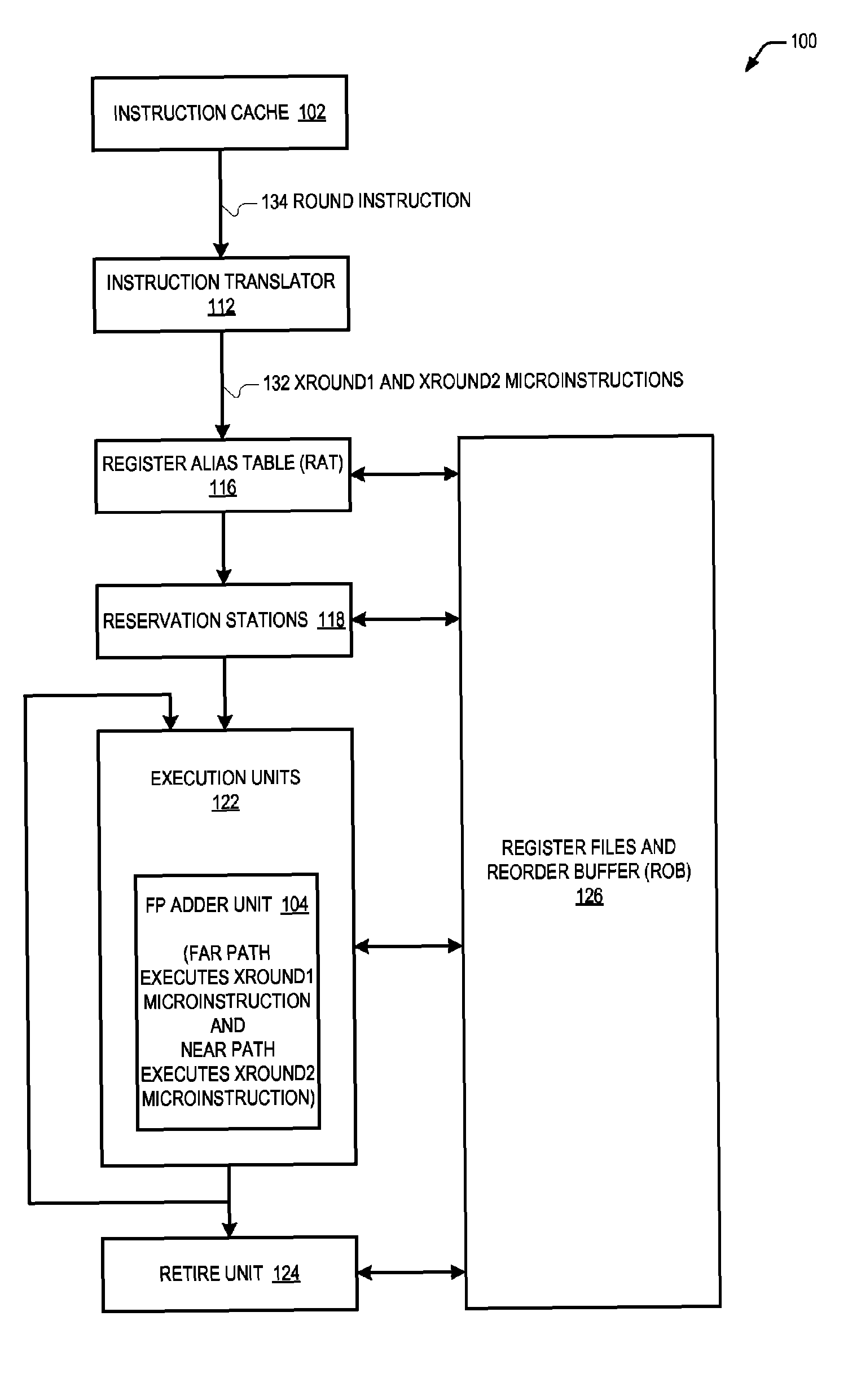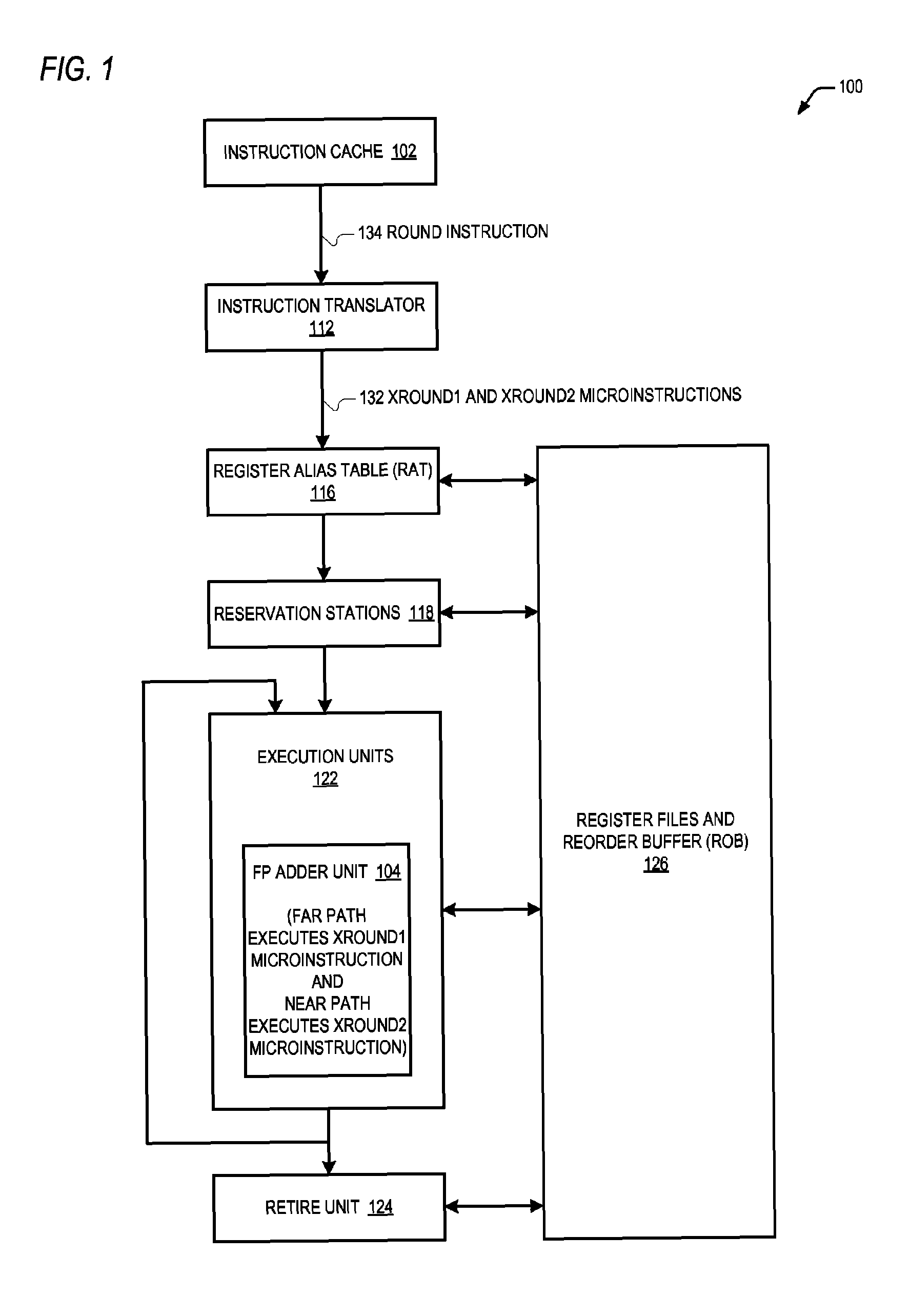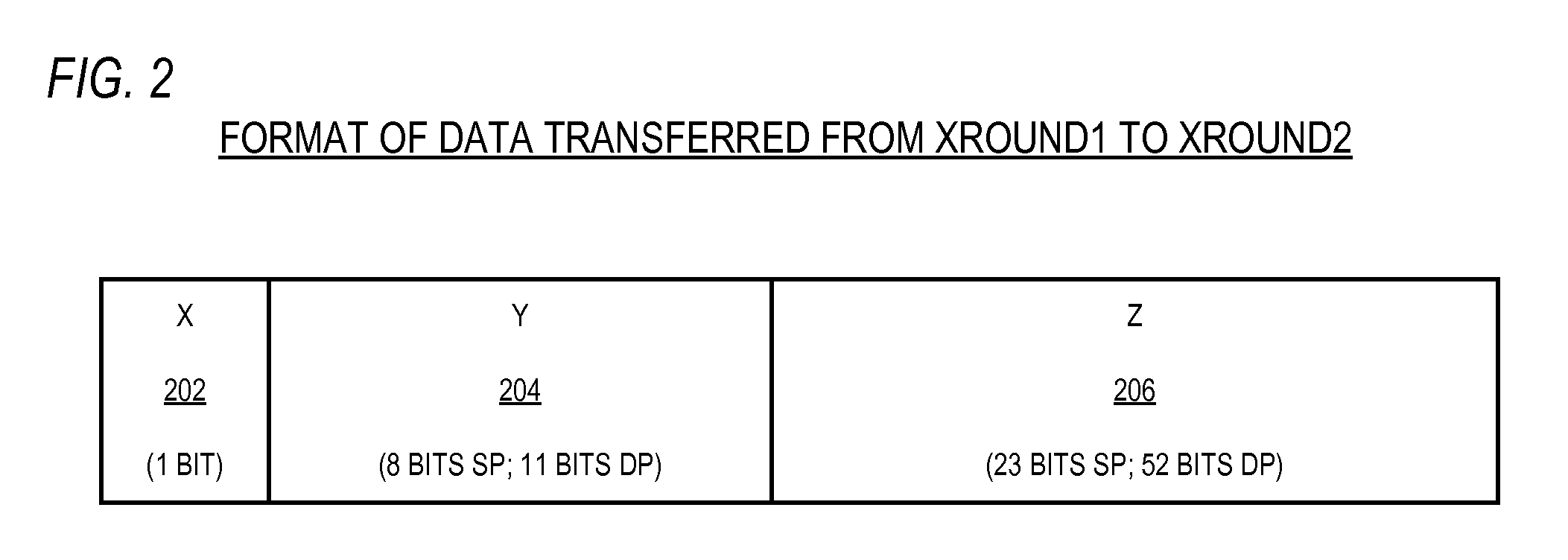Non-atomic scheduling of micro-operations to perform round instruction
a microprocessor and instruction technology, applied in the direction of program control, computation using denominational number representation, instruments, etc., can solve the problem of consuming valuable die space, affecting the performance of the round instruction, and penalizing any calculation not requiring some portion of the sequential connection with its intrinsic delay
- Summary
- Abstract
- Description
- Claims
- Application Information
AI Technical Summary
Benefits of technology
Problems solved by technology
Method used
Image
Examples
Embodiment Construction
[0020]Embodiments are described herein of a low latency floating point hardware design without addition of poorly utilized, special function circuit components. The constituent circuit elements are separated into minimal groups required for classes of calculation, thereby minimizing overall circuit delay per calculation. To provide the operations required for the ROUND instruction without undesirable addition of special purpose hardware, these operations are scheduled and dispatched sequentially into an appropriate circuit group.
[0021]It next becomes necessary to decide if the two required operations, which are referred to in the embodiments described herein as microinstructions named XROUND1 and XROUND2, will be scheduled and dispatched immediately adjacent to one another in locked fashion, or if they can be treated as independent microinstructions that must be sequential but may have indeterminate separation in time or clock cycles.
[0022]An out-of-order microinstruction dispatch a...
PUM
 Login to View More
Login to View More Abstract
Description
Claims
Application Information
 Login to View More
Login to View More - R&D
- Intellectual Property
- Life Sciences
- Materials
- Tech Scout
- Unparalleled Data Quality
- Higher Quality Content
- 60% Fewer Hallucinations
Browse by: Latest US Patents, China's latest patents, Technical Efficacy Thesaurus, Application Domain, Technology Topic, Popular Technical Reports.
© 2025 PatSnap. All rights reserved.Legal|Privacy policy|Modern Slavery Act Transparency Statement|Sitemap|About US| Contact US: help@patsnap.com



